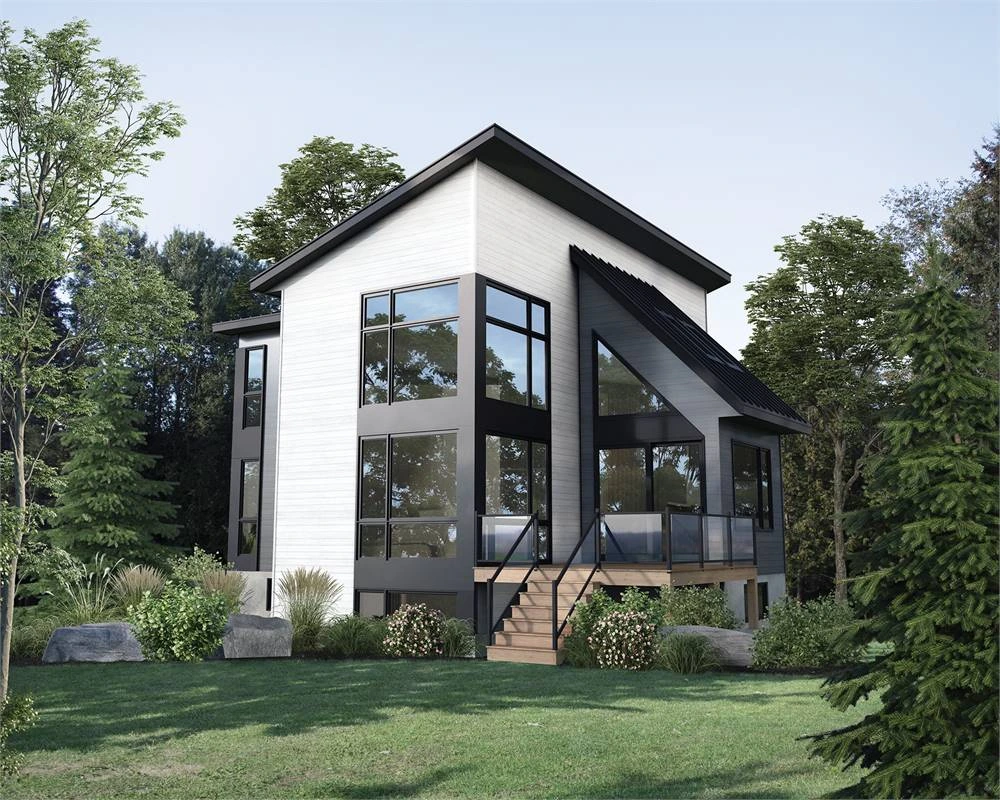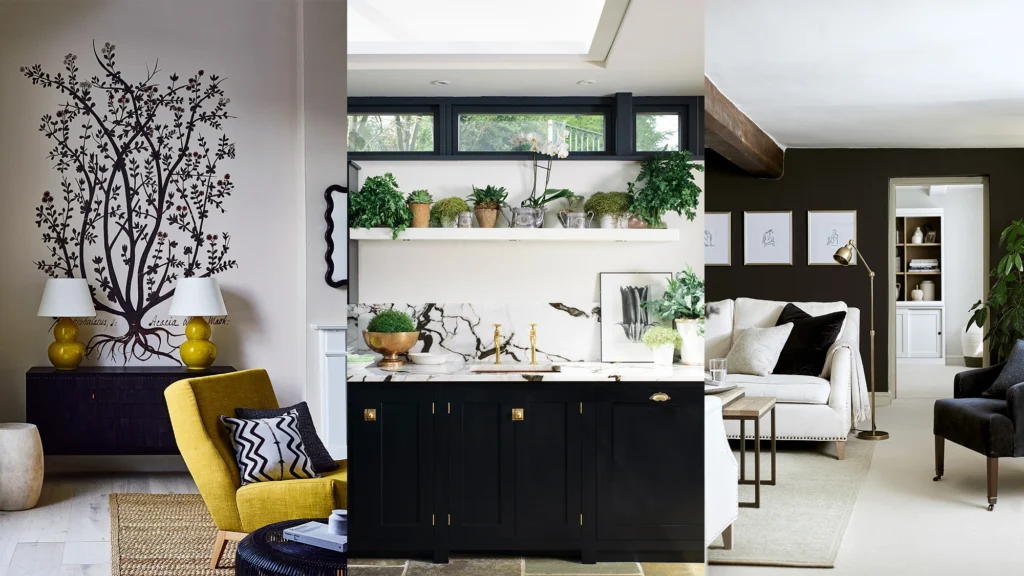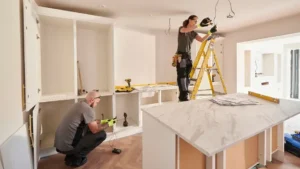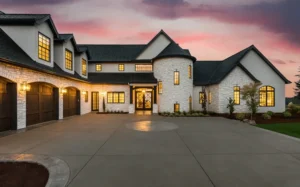
In recent years, the striking contrast of a white house with black trim has become one of the most sought-after architectural styles. This color combination blends modern minimalism with timeless sophistication, making homes stand out in a way that is both classic and contemporary. Whether you’re designing a new home or revamping an old one, this aesthetic delivers a bold statement that is hard to ignore.
The Evolution of the White House with Black Trim Trend
A Historical Perspective
The concept of pairing a white exterior with black trim has roots in classical architectural styles, especially Georgian and Colonial homes. These historic homes utilized black as a primary accent color, often highlighting windows, doors, and rooflines. This style was favored for its understated elegance and timeless appeal, and today, modern architects have embraced and evolved it, incorporating the high-contrast look into various styles—from modern farmhouses to minimalist urban homes.
A Modern Revival
While the white-and-black pairing was once primarily used in historic homes, it has made a significant comeback in contemporary architecture. As homeowners look for ways to balance traditional charm with modern simplicity, this trend provides the perfect solution. Black trim offers a dramatic flair that enhances the white backdrop, making the house appear sleek, sophisticated, and well-defined.
Key Features of a White House with Black Trim

1. Sleek and Stylish Aesthetic
The primary allure of the white house with black trim is its visual appeal. The contrast between light and dark creates a sleek, sharp look that draws attention to the architectural details. Whether it’s the windows, rooflines, or even doors, black trim highlights the features in a way that lighter colors cannot. This creates a sense of structure and uniformity across the home.
Black trim also provides a perfect backdrop for a wide range of exterior styles and materials. Whether your home features wood siding, stucco, or brick, black trim adds an air of sophistication and elevates the overall design.
2. Versatility Across Architectural Styles
One of the reasons this design choice has gained so much popularity is its versatility. From modern minimalist homes to cozy farmhouses, white exteriors with black trim can work across a variety of architectural styles.
- Modern Homes: In sleek, urban settings, black trim can complement large windows and flat roofs, enhancing the minimalist appeal.
- Farmhouse Aesthetic: For a modern farmhouse, the combination creates a cozy yet contemporary look that blends rustic charm with modern touches.
- Traditional Styles: Even in more traditional settings like Colonial or Georgian homes, black trim adds a modern update without compromising on the home’s historic character.
3. Low-Maintenance Appeal
Another advantage of black trim is its practicality. Black is a forgiving color when it comes to hiding dirt, grime, and wear over time. This makes it a lower-maintenance option for busy homeowners, especially when compared to lighter-colored trims. Additionally, black paint or finishes tend to fade less noticeably over time than lighter colors, ensuring that your home retains its bold look for longer.
Choosing the Right Shades of White and Black
The key to nailing this trend lies in choosing the right shades of white and black. While the concept may seem simple, selecting the perfect combination is crucial for achieving the desired effect.
1. Best Shades of White for Exteriors
There are many different shades of white to choose from. If you’re looking for a crisp, bright appearance, opt for a true white. However, if you prefer a softer look, an off-white or cream shade can add warmth without sacrificing the overall contrast.
- Crisp White: Perfect for modern homes where a clean, minimalist look is desired.
- Off-White or Cream: Adds a touch of warmth and softness, ideal for traditional or farmhouse styles.
2. The Best Finishes for Black Trim
When selecting a black trim, the finish is just as important as the color itself. While glossy black can add a touch of sophistication, matte black provides a more understated and modern look.
- Matte Finish: Best for modern, minimalist exteriors.
- Glossy Finish: Works well for traditional or upscale homes, adding a luxurious sheen to windows and doors.
Designing the Exterior: Windows, Doors, and Roofing
1. Highlighting Windows and Doors
Windows and doors are often the focal points in a white house with black trim. By framing them in bold black, you can draw attention to these features while also enhancing the overall architectural structure of the house. Black-framed windows offer a timeless, industrial-chic vibe that has become a staple in modern homes.
2. Harmonizing Roof and Gutters
To ensure a cohesive look, it’s essential to consider the color and style of the roof and gutters. A dark roof complements the black trim and adds depth to the overall design. Opt for black or dark gray shingles to maintain the aesthetic unity of your home’s exterior.
3. Accentuating with Landscaping
The landscaping around your home plays an essential role in softening the stark contrast between black and white. Lush greenery and thoughtfully placed plants can balance out the sharp lines of the black trim while adding warmth and natural beauty. Consider planting low-maintenance shrubs and flowers that will thrive against the bright white backdrop of your home.
Interior Design: Bringing the Look Inside
While the white-and-black combination is stunning on the exterior, it can also be carried into the home’s interior design.
- Black Interior Trim: Using black trim around windows, doors, and baseboards inside can create continuity between the exterior and interior.
- Accent Walls: White walls paired with black furniture or accent pieces inside the home provide a minimalist yet cozy ambiance.
- Natural Elements: Wood, stone, and metal accents can complement the monochromatic theme, adding warmth and texture to the overall design.

Sustainability and Energy Efficiency
Dark colors, like black, absorb more heat than lighter colors, which can impact the energy efficiency of your home. To counteract this, consider using energy-efficient materials for your windows and doors. Opting for eco-friendly paint and materials will not only reduce your environmental footprint but will also increase the longevity of your black trim.
Common Mistakes to Avoid
1. Overusing Black
While black trim can be striking, too much black can overwhelm the overall design. It’s important to find a balance. Use black trim selectively to highlight key architectural features without overdoing it.
2. Not Considering the Surroundings
It’s essential to consider the surrounding neighborhood and environment when adopting this design. If your home is in a more traditional area, a bold black-and-white exterior may stand out in a way that feels out of place.
FAQs About White Houses with Black Trim
1. Is black trim a good choice for energy efficiency?
Black trim can absorb more heat, but modern energy-efficient windows and materials can help mitigate any negative effects.
2. What materials work best with black trim?
Black trim pairs well with a wide range of materials including wood, stucco, and brick, giving you flexibility in your design.
3. Does black trim require a lot of maintenance?
No, black trim is low maintenance and hides dirt and stains better than lighter-colored trims.
4. Can black trim be used indoors?
Yes, black trim can be carried into the interior to create a cohesive and stylish look.
5. What type of roof works best with black trim?
Dark-colored roofs, such as black or dark gray shingles, complement the overall aesthetic of black trim and create a unified look for your home.







